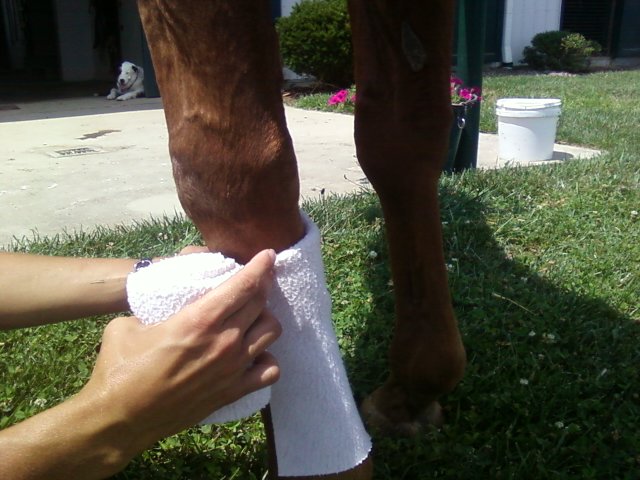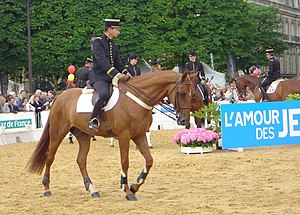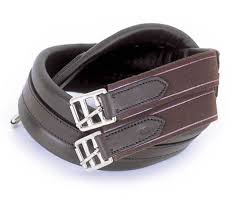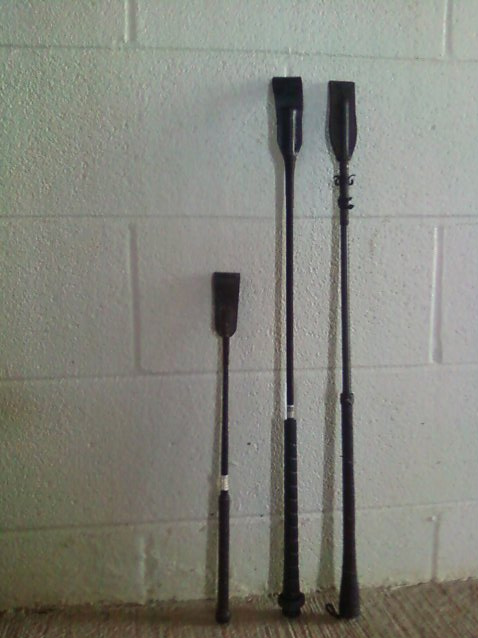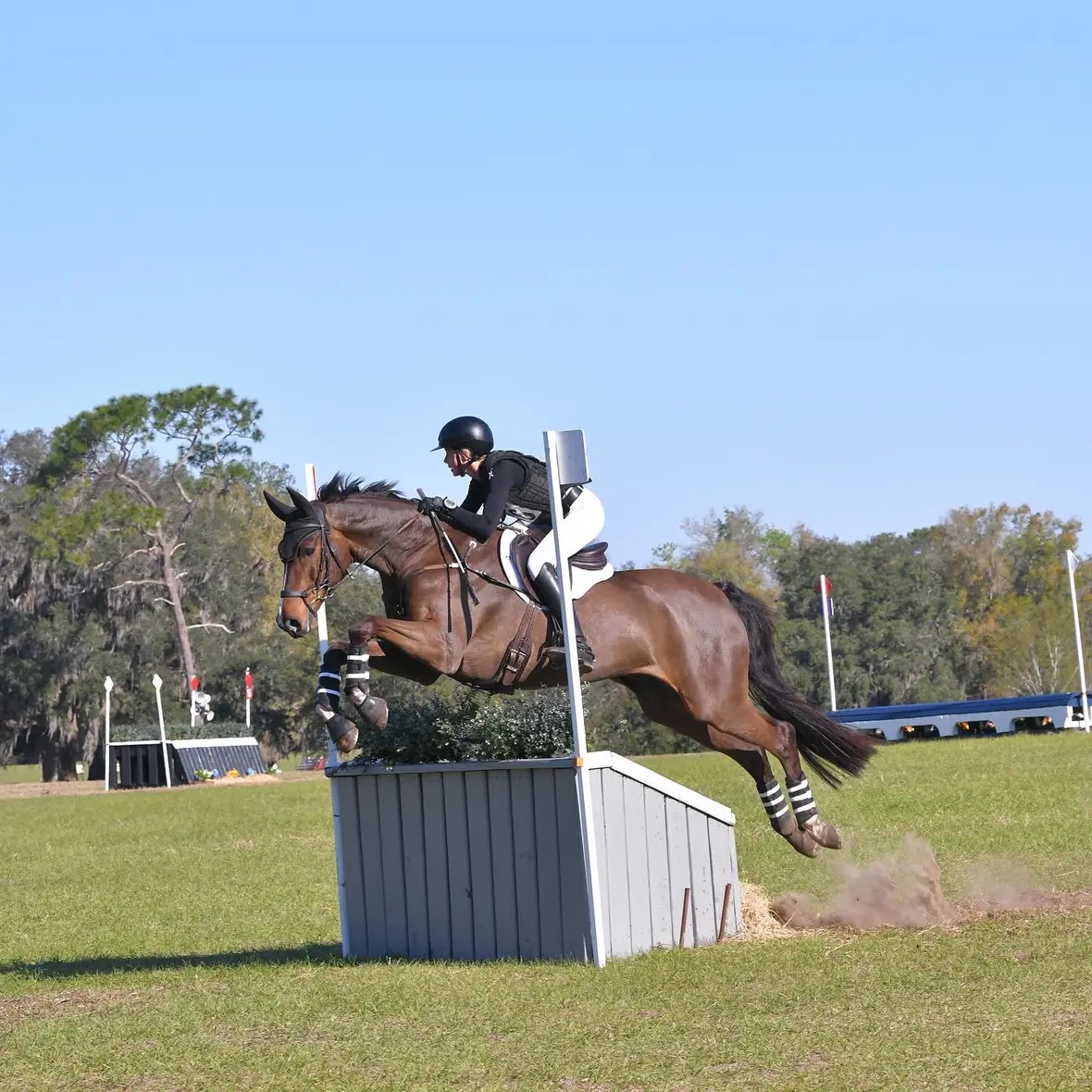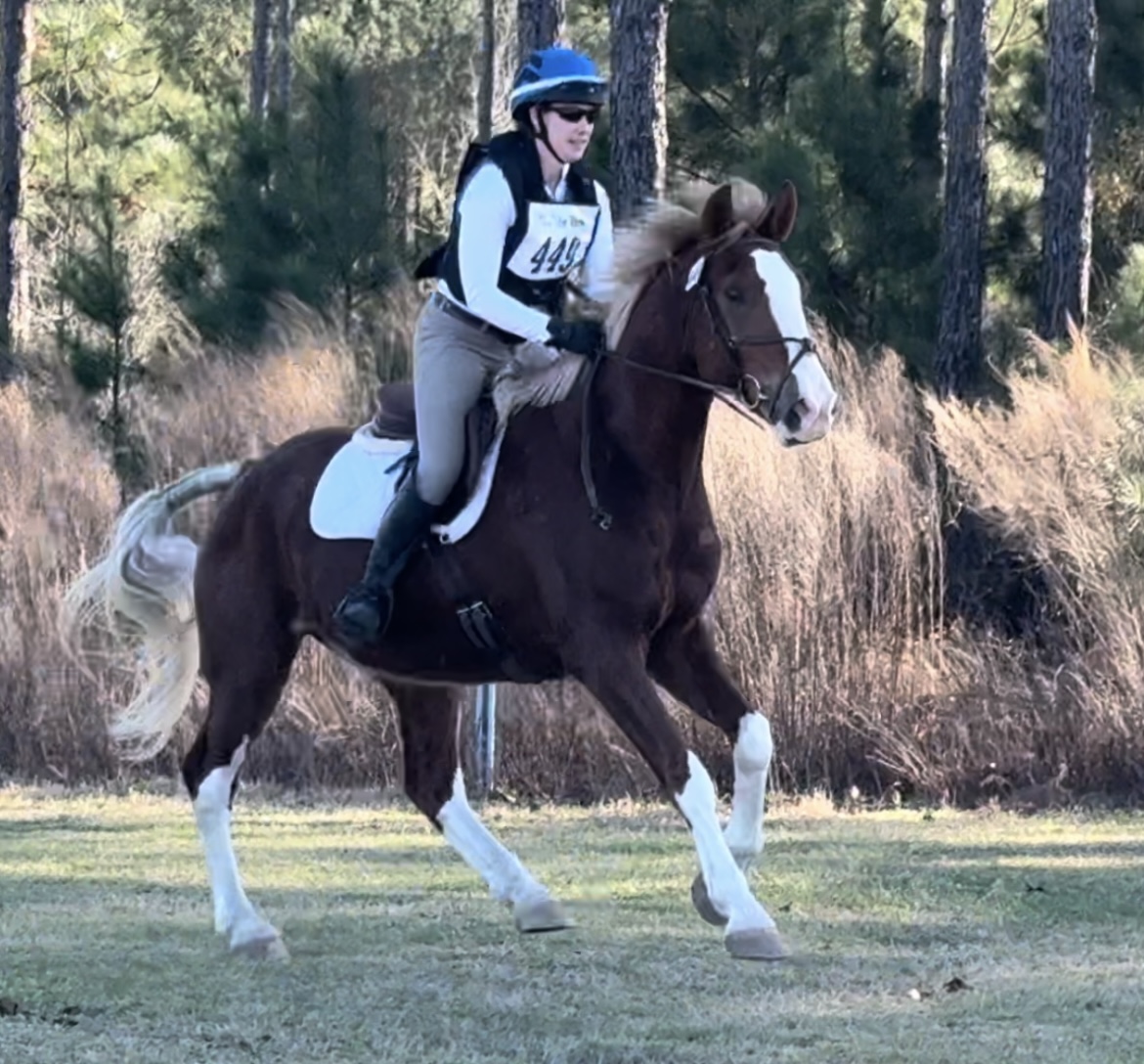
Back in June, I wrote an article about cross-country schooling a green horse, and how we all seek some special feeling this sport gives to us. This past weekend, the ex-broodmare officially became an Event Horse (for real).
Tuesday of last week, I made the (right) decision to scratch my preliminary level entry; the ground was hard, and that horse really didn’t need to go. On a whim, I asked the event secretary if I could substitute a lower level entry. She agreed (bless her!) and I had to choose a horse to enter. My preferred (somewhat experienced) novice candidate was suffering from lost-shoe-itis, making him more or less unrideable for the past two weeks. I was left with Rocket, the ex-broodmare, and the possibility of going beginner novice. Keep in mind, she has only been in riding work since February. She learned to jump at the end of March. And her first attempt at cross-country was six weeks ago.
What the heck, I figured she could probably do it. It wouldn’t be pretty, we wouldn’t be competitive, but I believed she could handle it. I made the necessary arrangements (things like a last-minute Coggins!) and crammed as much preparation into her as I could in four days. A quick jump, a brief xc school, and two days of “intense” beginner novice flatwork. I had mostly worked on her relaxation and rhythm…not doing precise transitions at particular points around the arena (this proved most difficult). But c’mon, any horse can walk, trot, canter a few big circles, right?
Saturday morning we were off to the show. I worried how she would act once we got there– would she settle in her stall? Would she be a “screamer,” stall walking and whinnying her head off? She’s used to living outside 24/7 in a herd situation. Would she eat and drink normally? How would she handle being in a tent? What about a crowded (and often CRAZY) warmup? She’d hardly worked around other horses before. There were lots of questions to answer, outside of the “can she finish three phases of a horse trial.”
I needn’t have worried. She settled in like an old pro, munched her hay and enjoyed the activity around her. She made friends with her neighbors, but did not become attached to them. She was polite, respectful of her stall guard, and just extremely pleasant in general. I was encouraged, though I knew the riding part would still be a challenge.
I’d already accepted that dressage was going to be ugly. She’d never been in a dressage arena; I knew there would be gawking at letters, and possibly deer-in-headlights looks at the judge’s booth. I figured transitions would happen “in the general vicinity” of a letter, most likely inverted. I just wanted to keep all four feet inside the arena, and not run over anything. In that respect, it was a success. She actually had two or three rideable moments, and her transitions were relatively prompt. Yes, she was tense; yes, she was above the bit a lot; but she did her best, didn’t dodge sideways at the letters, or prop and duck at the judge. It was an ugly test to be sure, but considering her inexperience I was very proud. We barely managed to break 50 (you know it’s bad when your best comment is “Nice Turnout!”), putting us solidly in last place out of 16, but I was happy.
The show jumping course seemed fair enough for the level; I still saw lots of potential challenges for such a green horse, but I didn’t think it would overface her. She warmed up quite well, after nearly stopping cold at the first crossrail. The chaos of BN warmup (kids on ponies flying around, others in minor panic) didn’t seem to bother her at all. We went straight into the show ring (surrounded by the flapping temporary tents) and she focused completely on me and the jumps in front of her. Yes, I took the “scenic route” making big loopy turns…she still lacks a bit of balance, to be sure. But Rocket approached the jumps with enthusiasm, and felt great. Her only green moment came at the very end of the course– the two-stride combination. She came boldly through the turn, but did a typical green-horse prop-and-wiggle when she realized there were TWO jumps right there! I gave her a kick and she jumped in anyway, knocking the rail (deservedly so), but straightening herself to jump out nicely. A rail and three time penalties…I was pleased with her performance, and moreso with the confidence she displayed. We moved up from 16th to 14th place; I told you I didn’t expect to be competitive! (LINK to photo)
Cross-country seemed well within her capabilities. Granted, that’s the first BN course I’ve walked (with the intent to ride) in about eleven years…but given how well she has schooled (um, twice in her life) I thought she could do it. I expected her to be green starting out, but I knew her confidence would build as we went. As it turned out, she blasted out of the startbox (so much for trotting!) and attacked the course from the first fence. Rocket settled into a great rhythm, and I hardly had to kick at anything. The water had caused several issues for my division– it was a narrow entrance, and too many riders were walking their horses to the beach and then letting them stop. I cantered up to it, she broke a trot, but I kicked her on positively and she went right in.
We finished the course with hardly a hesitation. Just as that first xc school, her ears were up and her eyes were beaming, looking for more. I had the same big grin on my face… now I *knew* I had myself a new event horse. Yes, it was only beginner novice. I have no idea how far she will want to go. But overcoming her inexperience to perform as well as she did, with her confidence growing all weekend– that’s the best you can hope for from any horse.
To top it all off, she moved up from 14th to 7th after cross-country. A pretty purple ribbon…well-earned, and well-appreciated.









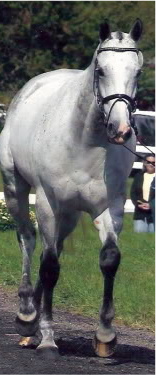 Do you ever stare in awe at the sleek shiny horses, the glistening brass, perfect braids, and dazzling white marks at a CCI trot up? Do you ever wonder how they get that way? (LOTS of hard work is the correct answer!) Each Sunday morning we will bring you a little insider info on how the big-time grooms manage an upper level event horse. Feel free to email or comment with specific grooming questions if you have a topic in mind!
Do you ever stare in awe at the sleek shiny horses, the glistening brass, perfect braids, and dazzling white marks at a CCI trot up? Do you ever wonder how they get that way? (LOTS of hard work is the correct answer!) Each Sunday morning we will bring you a little insider info on how the big-time grooms manage an upper level event horse. Feel free to email or comment with specific grooming questions if you have a topic in mind!
